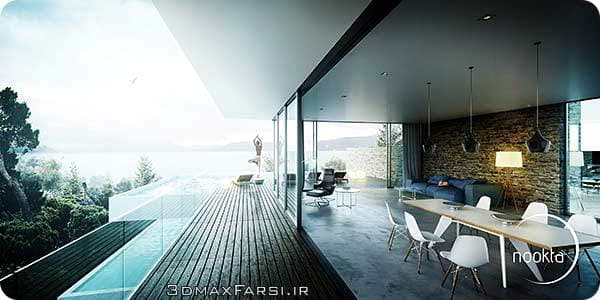ویرایش تکسچر و متریال اسکچاپ SketchUp Edit materials

متریال اسکچاپ | آموزش اسکچاپ به صورت کاملا فارسی و رایگان چرخش تکسچر یا متریال در طول منحنی آموزش اعمال متریال در اسکچاپ حالا که ما درک می کنیم که چگونه مواد را اعمال کنیم، اجازه دهید پیش برویم و این مواد را ویرایش کنیم. من تعدادی از مواد را در این صحنه و اگر ما به پنجره مواد ما برویم و به صفحه اصلی ضربه بزنیم، باید موادی را دریافت کنیم در واقع در مدل است و شما خواهید دید که ما حدود 10 ماده یا بیشتر داریم. حالا هر یک از این مواد را می توان روی آن کلیک کرد و شما می بینید که هر کدام یک نام توصیفی دارند و اگر بخواهیم می توانیم مواد را از صحنه خارج کنیم، بنابراین اگر مواد زیادی دارید، این ممکن است ساده تر باشد، بنابراین اگر من ابزار eyedropper من را انتخاب کرده و ساخت متریال در اسکچاپ متریال آماده vray اسکچاپ نحوه استفاده از متریال وی ری در اسکچاپ متریال دادن در اسکچاپ دانلود متریال برای اسکچاپ دانلود تکسچر اسکچاپ آموزش اسکچاپ آموزش رندر اسکچاپ بگویم روی دیوار ساختمان پنهان شده است، شما خواهید دید که این مواد را به ارمغان می آورد، آن را برجسته می کند، و در این صورت ما نیز نامی در این مورد داریم اکواریوم OO-88 اکنون زمانی که یک ماده انتخاب شده است، می توانید آنرا ویرایش کنید. حالا ما به سادگی با رفتن به برگه ویرایش ویرایش می کنیم و می بینیم که ما تعدادی کنترل داریم که می توانیم برای استفاده از این مواد استفاده کنیم . رنگی که در بالا قرار دارد، رنگ واقعی مواد است. حالا ما می توانیم این رنگ را با استفاده از تعدادی از روش های مختلف انتخاب کنیم. ما دارای چرخ رنگ هستیم، ما همچنین تعدادی لغزنده های مختلف داریم. بنابراین ما HLS، HSB و RGB داریم. من می خواهم از چرخ رنگ استفاده کنم و همه چیزهایی که باید انجام دهیم این است که اساسا فقط این رنگ را تغییر دهیم و بر روی دیوار خود نشان داده شود بنابراین در اینجا می توانم اساسا رنگ پایه را انتخاب کنم و سپس این سبب می شود که نور و تاریکی را از بین ببرد و بنابراین وقتی که این ماده را در محل قرار دهیم، اگر ما به مدل ما برسیم، خواهید دید که این رنگ تغییر کرده است. در حال حاضر نیز نام در اینجا باقی مانده است. بنابراین دوباره این رنگ آکوامارین است.
If I want, I can change it to something different. And all we have to do is just type in a new name, so I could call this, say, custom color. And once I have that, you can see that, when I go to edit, that color also comes up. Let"s go ahead and select another color here, let"s select the lawn. Now the lawn actually has a photographic texture. And if we go into edit, you can see this down here. Now the default color here is important. And when you create a material with a texture, this will reflect the texture as you create it. And this is important, because when you go into view, face style, and you go shaded, this is the color that will show up. So if I go shaded with textures, it"ll show the photographic color. So this color is important because it kind of gives you a hint as to what texture or what image is being used. Now this texture image can be turned off or on. We can also use our file browser here to select a different jpg. And more important, we have a scale control here. So in this case, this material is set to three feet by three feet and change. If I want, I can change this value. So let"s say I wanted my material to be a little bit bigger, let"s say I type in six feet. If I type in six feet, you"ll see how the texture itself grows. Now this is really important because it scales the actual image used for the texture to the scale of the scene. So if you have a wood floor with four-inch planks, you want to make sure that this is scaled so that the planks are actually four inches. Now when I scaled this from three feet to six feet, this one also went up. We can unlink it if we want. So if I were to break that, I can scale each one to whatever I want. So if I wanted to make that one exactly six feet, I could do it and then lock it, if I want. Now in addition to the scale of the texture, we also have opacity. So I"m going to select the windows of the house, I"ll just edit those, and the windows actually have a color. And you can see that, by changing the color, I"m changing the color on top of the transparency. And that transparency is controlled here, by the opacity control. And if I turn it all the way up, the windows are totally opaque. And turn it all the way down, the windows disappear. And somewhere in between is the perfect setting for this transparency. Now also notice how, when I change the transparency on one window, all the windows change, because they all reference that same material. Now materials are almost like components, if you change the base material, anything affected by that material will also change. So the materials window allows you to edit materials and give you control over things such as opacity, color, texture, and scale.
 •
•

